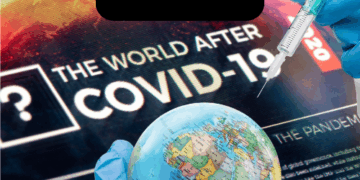- General Information
- Health
- Society
- Media
- Become a MemberPREMIUM
- Events
- Contact Us
- Shop
- Categories
- Access to Health
- Ageing & Longevity
- Asset-Based Community Development
- Community & Health
- Ecology & Environment
- Economic & Political Root Causes
- Economic Stability
- Education
- Environmental Contaminants
- Ethnicity & Gender
- Health Condition of the Body
- Holistic Approach
- Law & Human Rights
- Men’s Health
- Natural Medicine
- Nutrition & Food
- On A Philosophical & Ethical Note
- Political Acceptance & Opposition
- Race
- Social Determinants of Health
- Traditional Medicine & Adjuvant Therapies
- Transhumanism
- Wellness
- Women’s Health
THE PANDEMIC MEASURES: UNSUBSTANTIATED AND LARGELY INEFFICIENT
Insights in a recent study published in the International Journal of Public Health
INTRODUCTION
A landmark conceptual study was recently published in the International Journal of Public Health: “What Lessons can Be Learned From the Management of the COVID-19 Pandemic?”
This lengthy study covered and analysed the proposed measures during the COVID-19 pandemic, as supported by the WHO and most governments around the world. Although many scientists and health professionals questioned and substantiated the potential negative outcomes of these protocols, almost every government or state-appointed expert refuted these insights per definition.
In this article we will summarise the major findings of this important study that is the first of its kind to have made an overview of all imposed restrictions and policies.
Up until 2021, the global population was subdued to the implementation of Non-pharmaceutical interventions (NPIs) which would be replaced by the combination of extensive testing and vaccination strategies, both with mRNA-DNA technology, in some countries, classical vaccines. The vaccines were developed in a record speed, overhauling the normal scientific procedures testing inoculations for a longer period of time, often 5 to 7 years. The vaccines were promoted as ‘safe and effective’ and the ‘path to freedom’, as they would halt transmission. Nonetheless, it was soon clear that breakthrough infections within the vaccinated were common.
On 5 May, 2023, the WHO declared the pandemic over.
OVER-RELIANCE ON MODELS –MOSTLY FLAWED AND A BAD PREDICTOR
Mathematical models were used to predict reproduction rates, infection rates, hospitalisations and potential deaths. Furthermore, many NPIs were studied through modelling in order to support the thesis of functionality and prevention.
It is noted in this study that there was an over-reliance on the models that created the most ‘weight’ in decision making processes, not on studies that epidemiologically made the most sense. Models are always vulnerable as not all real-life variables and social determinants will be accounted for. Hence, modellers and statistician shall have to rely on assumptions to start with.
The SIR-model (Susceptible, Infected, Recovered) first described in 1927, was often considered the appropriate model to study processes and support policies. Some modellers also accounted for ‘exposed’ populations in this equation (SEIR-model). Where these models could be useful as an aid in epidemiological projections of certain diseases, like measles, which is highly infectious, predominantly spread through close contact, this was not the case for COVID-19 for which we had no prior data. Most models didn’t take seasonality in account, an important factor. Many were based on the assumption there would only be one large wave. If deviations occurred in this model, it was consequently attributed to the efficiency of the NPIs.
Many SIR models during the pandemic didn’t differentiate enough in demographic variables. Same age, amount of contacts, gender, immune status, occupation, etc, were often the standard parameters. While no individual is the same (age, comorbidities, immune responses, socioeconomic factors,…), leading to enormous generalisations that are far from projecting the reality. Even if models adjusted for these variables, this only accounted for a small proportion of the person-to-person variability in transmission. The researchers also found severe statistical inconsistencies used to calibrate the models.
Furthermore, during the first wave, optimal PCR-Tests were not available. Many people had developed the disease, but were not accounted for. The true number of infections was seriously underestimated which influenced models as a whole. This also explains why the initial Infection Fatality Rate (IFR) was much lower in reality than the considered estimates used to inform policies and public, since most infections were mild or even asymptomatic for most people. Add to this that this research confirms many hospitalised patients in which COVID-19 was confirmed that were not admitted for COVID-19 but added to the statistics.
Models mostly assumed the worst-case-scenario, not taking into account the behavioural changes, treatments and social determinants could have. Therefore these models could never be tested on its merits, nor could they be questioned while remaining non-falsifiable.
Those models used to claim that NPIs and/or vaccination worked were extremely biased as they relied on counterfactual scenarios. Here, researcher would compare statistics following the introduction of policies with projections of what would’ve happened when no policies were implemented (worst-case-scenario assumptions). This was used to claim that vaccines and NPIs worked although the worst-case models never came true or could not be substantiated.
NPIs WERE NOT EVALUATED PROPERLY
Governments implemented a wide range of measures: social distancing, masks, school closures, bans on travel and gatherings, lockdowns, curfews, e.g. The researchers conclude that the progression of the pandemic wasn’t halted by all these measures. It may have contributed in some slowing down of the progress, although this remains questionable.
Moreover, before 2020, pandemic preparedness plans didn’t even consider NPIs to be useful. Even until the first months of the crisis, the WHO and governments followed this advice. After April 2020, the available science was replaced with untrustworthy models and unsubstantiated measures, changing the stance on NPIs without any decent scientific backing. All alternatives like the Swedish approach, focused protection, and other community -liaised alternatives were discarded without regard.
During the pandemic NPIs were not reconsidered or evaluated on their efficiency, which is in line with the counterfactual models as discussed earlier.
Several studies found the waves to peak before the implementation of the measures, afterwards It was than claimed that the downward progression of the curves was attributed to the NPIs. Meta-analysis conducted before the pandemic already concluded there was no significant effect in the use of face masks. Up until today, the randomised-controlled studies fail to prove the efficiency of its use.
The harmful consequences of using NPIs were largely neglected: rise of obesity, mental health issues, intrafamilial violence, impaired care for children and the elderly, and the larger burden on the economy and society.
The researchers point out there is a lack of retroactive investigation into the NPIs and their negative outcomes based on real-life data.
GENERAL CONSIDERATIONS
The study notes that repurposed drugs like ivermectin deserved at least an honest chance to be studied for their alleged efficiency. In this regard it also point out to the pressure imposed on healthcare workers not to instigate any protocol that wasn’t considered ‘appropriate’ by the policymakers. The researchers also question the enforcement of the vaccines on the general public, while discouraging doctors and scientists to consider evidence-based medicine, hence, discarding the informed consent from the patient. It is further observed that many health professionals seeking debate and substantiation were treated unfairly by framing them as anti-vax or conspiracy-theorist when they questioned policies or when asking for debate or clear evidence.
The study further argues the deliberate conflation of the ‘new’ nRMA-based vaccines as safe and effective was misleading towards the general public. The claimed effectiveness of the mRNA vaccines was seriously overestimated and incorrectly evaluated. Many of these studies were methodologically flawed, statistically manipulated in creating an apparent Vaccine Efficacy (VE) of + 90%. Long-term data were missing. Most of these studies had no data on minors, pregnant women and the elderly were largely understudies.
Also the conclusion that the vaccines contributed against severe disease or hospitalisation was never proven by any randomised-controlled trial. The observational studies claiming these effects were also prone to biases and are, de facto, not suitable to prove any causality.
Research on alternatives, repurposed drugs, and potential beneficial protocols were hampered.
DISMISSAL OF SCIENTIFIC PERSPECTIVES
The study shows how governments, media and social platforms colluded to label other potential medical perspectives as misinformation or anti-science. In due course, all debate on challenging topics was denied or at least severely hindered by stakeholders. The authors also explain the working of fact-checking and it funding organisations. On a wider scale all these stakeholders committed to keep the narrative afloat. Fact-checkers were trained using the ‘Inoculation Theory’, based on the concept not to allow (pre-bunking) other perspectives and dismissing them based on the guarded narrative.
THE ROLE OF GOVERNMENTS AND POLICYMAKERS
It was argued that governments and policymakers ‘followed the science’. However, this study claims this was not the case. Policies were guided primarily by models and statistics which in a pre-pandemic era would be considered unethical. The researchers also found many state appointed experts were heavily influenced by conflict of interests.
Governments also engaged in psychological tactics by means of nudge manipulation. The researchers also point out to the statements of former UK British Prime Minister, Rishi Sunak, admitting that the UK models were off by a factor 20!
ROLE OF BIG PHARMA
The study also highlights the intertwined relationship between Big Pharma, medical associations and social media platforms, describing conflict of interests between press agency Thomson Reuters, Google, Facebook, and Pfizer, Astrazeneca, J&J and Moderna.
THE SCIENTIFIC COMMUNITY
Research was not only hampered, certain narratives were prioritised for publication over research that questioned the narrative. The study describes the publication of a PCR-test study that was published after two days of review, while other studies (not aligning to the narrative) were scrutinised for over two years before publication.
They refer to the Flaxman et al. study that boosted the narrative of working NPIs was published in less than two months. Wood’s study that showed the first wave was already in steep decline before the NPIs could have taken effect was faced with many rejections, and only got published by the end of 2022. Also pre-print servers started refusing research that did not align with the ‘consensus’, making it even more difficult to reach peer-review evaluation.
Medical journals withdrew or retracted peer-reviewed articles, using it to defame the researchers, creating an aura of fraud. Before the pandemic, retraction was hardly ever used, only in very rare cases. This might imply that journals were often put under pressure to retract articles if they could ‘cast doubt’. The latter is just what science should stand for, challenging dialectics, all in order to push the boundaries of knowledge.
CONCLUSION (SUMMARY)
Models shouldn’t have been used to guide public health decisions, it’s a tool to supplement science and should not replace empirical analysis.
NPIs should be considered with the outmost care, as science is lacking to support their effectiveness and has shown to create many unwanted consequences.
Pharmaceutical interventions should be scrutinised in depth before launching them within the global population so there is sufficient prove that indeed the treatment is ‘safe and effective’. Moreover, off-label-drugs/repurposed drugs should remain at the disposal and discretion to the doctor involved. The autonomy of doctors and patients are the basis for Evidence-based Medicine and need safeguarding in future public health crises.
The study further concludes the misguided attempt to reduce ‘misinformation’ can’t be considered a positive evolution as it inherently leads to censorship of scientific voices. Differing scientific opinions are at the core of progress and better public health approaches. Censorship will lead to weaker scientific conclusion and may jeopardise real and effective public health policies in the future, potentially harming the general public.
Overall the measures taken during the corona pandemic remain highly questionable and largely unsubstantiated. Public health policies should be approached by using real-life data and supported by substantiated measures respecting individual needs and treatments as per Evidence-based guidelines.
REFERENCE
QUINN, G. A., CONNOLLY, R., ÓHAISEADHA, C., HYNDS, P., BAGUS, P., BROWN, R. B., CÁCERES, C. F., CRAIG, C., CONNOLLY, M., DOMINGO, J. L., FENTON, N., FRIJTERS, P., HATFILL, S., HEYMANS, R., JOFFE, A. R., JONES, R., LAUC, G., LAWRIE, T., MALONE, R. W., MORDUE, A., MUSHET, G., O’CONNOR, A., ORIENT, J., PEÑA-RAMOS, J. A., RISCH, H. A., ROSE, J., SÁNCHEZ-BAYÓN, A., SAVARIS, R. F., SCHIPPERS, M. C., SIMANDAN, D., SIKORA, K., SOON, W., SHIR-RAZ, Y., SPANDIDOS, D. A., SPIRA, B., TSATSAKIS, A. M. & WALACH, H. 2025. What Lessons can Be Learned From the Management of the COVID-19 Pandemic? International Journal of Public Health, Volume 70 – 2025.
Disclaimer
The views and analysis expressed in this content (video, blog, article, etc.) are solely that of the author and does not necessarily reflect the views of humani-well, the organisation, or other associated parties.
Medical disclaimer: you should not rely on the information on this website as a replacement for seeing a doctor or other qualified healthcare provider for a diagnosis or treatment. Nothing in this publication should be interpreted as a substitute for the advice of a qualified healthcare provider. Please consult a medical professional before using any information contained in this publication.
Drs. Sam Brokken
Next to guiding this bunch of great people at Humani-Well, Sam covers a broad range of topics. From biomedical issues to societal impact analysis. HIs biggest strength? Being a 'generalist, and master of none'. Know More
© 2025 Humaniwell | CHOOSE WISELY. Powered by NoCodeLabs.



























